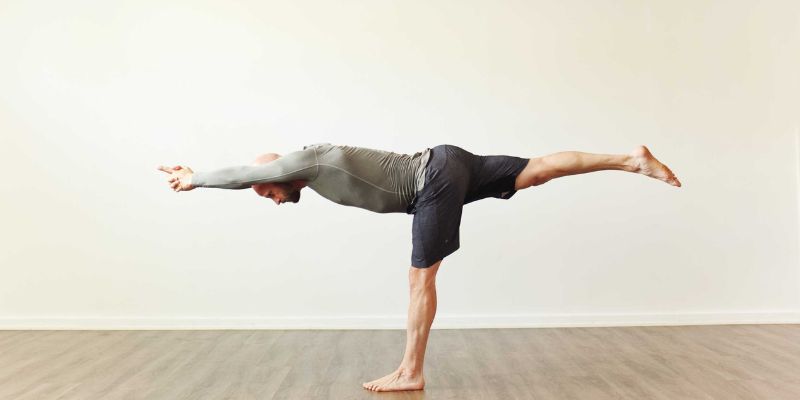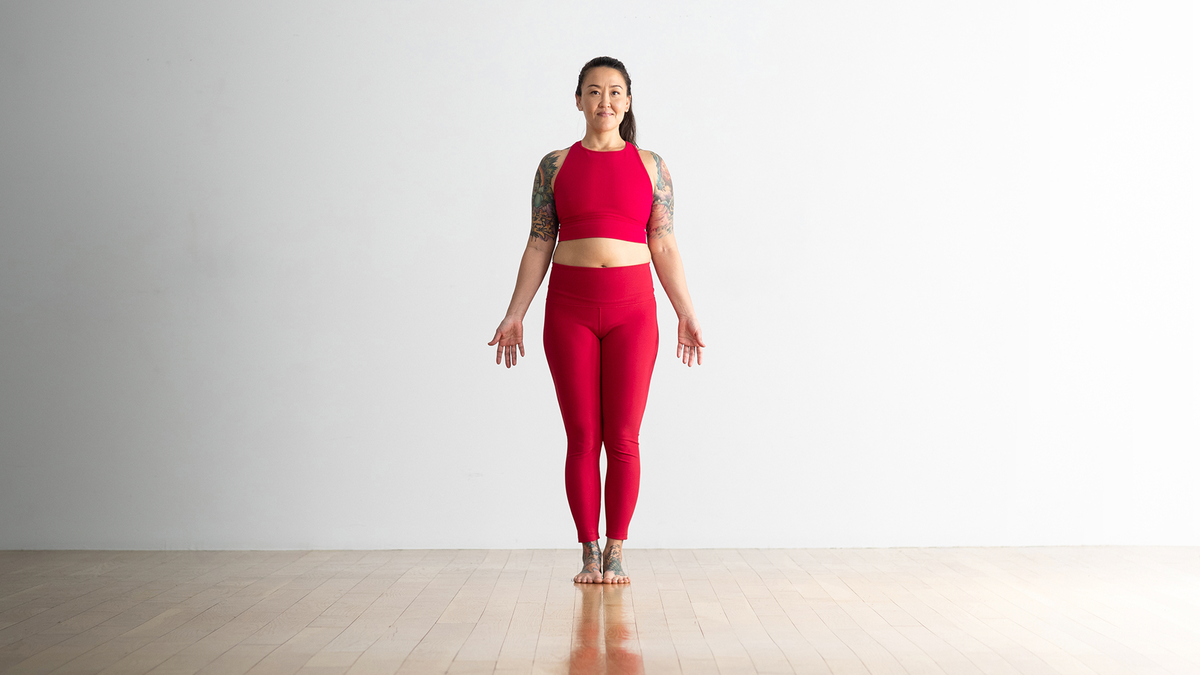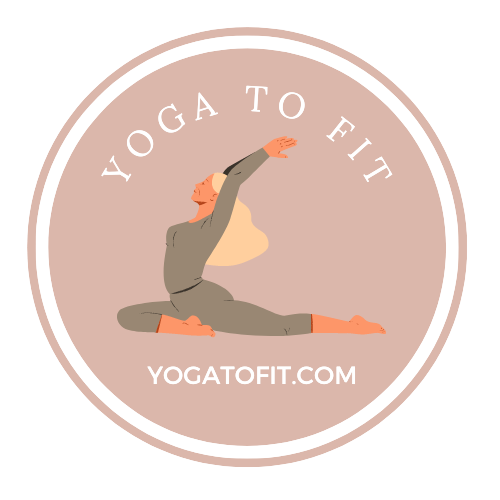How do Balancing Poses in Yoga Help Us?

Have you ever experienced that split second when you’re attempting to balance, and as soon as a thought distracts you, or you start to lose your balance in the pose? It’s interesting how maintaining focus is crucial for stability in balancing poses. In this article we will learn to balancing poses in yoga.
Yoga balance poses have several positive effects. Balancing poses require stability and equilibrium, and they can be challenging, yet immensely rewarding.
Balancing poses require maintaining equilibrium while standing on one leg or in a specific position, challenging your stability and core strength.
In this article, we will explore the various benefits of balancing poses in yoga and why incorporating balancing poses into your practice can be transformative.
The Fundamentals of Balancing Poses

Balancing poses, as the name suggests, require you to maintain equilibrium and stability while holding a specific position. These poses engage your core muscles, leg muscles, and the muscles responsible for posture. Moreover, they encourage mental focus and inner stillness, making them much more than just physical exercises.
Balancing poses are typically practiced on one leg or involve positions where your center of gravity is shifted. They are an integral part of yoga, particularly in styles like Hatha, Vinyasa, and Ashtanga yoga. Some well-known balancing poses include the Tree Pose (Vrksasana), Eagle Pose (Garudasana), and Half Moon Pose (Ardha Chandrasana).
Benefits of Practicing Balancing Poses in Yoga
The Physical Benefits of Balancing Poses
Balancing poses offer an array of physical benefits that contribute to your overall health and well-being:
a. Improved Balance and Posture: The primary benefit of balancing poses is, of course, improved balance. By regularly practicing these poses, you strengthen the muscles that support your posture, leading to a more upright and aligned body.
b. Increased Muscle Strength: Balancing poses target various muscle groups, including your core, legs, and glutes. As you hold these positions, your muscles become stronger and more toned.
c. Enhanced Flexibility: These poses also help in increasing flexibility, especially in the legs, hips, and lower back. Over time, your range of motion improves, reducing the risk of injury.
d. Better Coordination: Balancing poses require coordination between your mind and body. The constant adjustments you make to maintain balance help enhance your overall coordination.
e. Weight Management: Engaging in balancing poses contributes to weight management by burning calories and toning muscles. Additionally, yoga in general promotes mindful eating and self-awareness.
f. Pain Relief: For those suffering from chronic back pain, balancing poses can provide relief. The strengthening of core muscles and improved posture can alleviate back pain and discomfort.
The Mental Benefits of Balancing Poses
Yoga is not only about physical fitness but also about mental clarity and emotional well-being. Balancing poses offer various mental benefits that can improve your overall quality of life:
a. Stress Reduction: Balancing poses require deep concentration and mindfulness, helping you leave your worries behind. Focusing on your breath and the present moment can significantly reduce stress.
b. Mental Focus: The act of balancing on one leg or maintaining a specific posture demands your full attention. This enhances your ability to concentrate and remain present in other aspects of life as well.
c. Emotional Stability: Balancing poses encourage inner stillness, which can lead to emotional stability. These poses help you regulate your emotions and respond to challenges more calmly.
d. Self-Confidence: Successfully mastering balancing poses can boost your self-confidence. Overcoming physical and mental challenges in your yoga practice can translate to increased self-esteem in your daily life.
e. Mind-Body Connection: The mind-body connection is a fundamental principle of yoga. Balancing poses strengthen this connection, making you more attuned to the sensations in your body.
How to Incorporate Balancing Poses into Your Yoga Routine
Balancing poses can be challenging, but with regular practice and patience, you can incorporate them into your yoga routine. Here are some tips to get started:
- Warm-Up: Begin with a gentle warm-up to prepare your body for balancing poses. Focus on stretching and loosening your muscles.
- Start Simple: Begin with easier balancing poses like Tree Pose (Vrksasana) and progress to more advanced ones as you gain confidence and stability.
- Use Props: Props like yoga blocks or a wall can provide support as you work on your balance.
- Breathe Mindfully: Pay attention to your breath while in balancing poses. Deep, controlled breathing can help you maintain stability.
Expert Tips for Perfecting Balancing Poses
Balancing poses can be challenging, but with practice and the right approach, you can master them. Here are some expert tips to help you perfect your balancing poses:
a. Start with a Solid Foundation: Begin with a strong and stable foundation. Ensure that your standing foot is firmly rooted into the ground, distributing your weight evenly.
b. Engage Your Core: A strong core is essential for balancing. Engage your abdominal muscles to stabilize your body during balancing poses.
c. Fix Your Gaze: Find a focal point to fix your gaze on. This helps with balance and concentration. As you get better, you can challenge yourself by gazing at a more distant point.
d. Use Props: Don’t hesitate to use props like blocks or a wall for support when starting out. They can help you find your balance and build confidence.
e. Practice Regularly: Consistency is key. Regular practice of balancing poses will improve your strength and stability over time.
f. Breathe: Never underestimate the power of your breath. Steady and deep breathing can calm your mind and provide the necessary focus to hold your pose.
Top 5 Yoga Balance Poses for Beginners
If you’re a beginner looking to incorporate balancing poses into your yoga practice, here are five poses to get you started:
Tree Pose

Start by taking a tall stance and spreading your feet wide. Place your right foot on your left inner thigh or calf instead than directly on the knee joint as you shift your weight to your left foot. Extend your hands in front of you or bring them together at the centre of your chest. In order to maintain balance, find a focal point. After maintaining the position for 30 to 60 seconds, switch to the other side.
Mountain Pose

This pose may seem simple, but it helps improve overall balance and body awareness. Stand tall with your feet hip-width apart. Engage your core, relax your shoulders, and lengthen your spine. Distribute your weight evenly on both feet and find a steady, grounded sensation. Hold the pose for 1 minute, focusing on your breath and alignment.
Warrior III Pose

Place your right foot forward and begin in Mountain Pose. Engage your core and hinge forward from your hips, extending your left leg straight behind you. Simultaneously extend your arms forward or bring them alongside your body for balance. Maintain a straight line from your head to your extended left foot. Hold the pose for 30 seconds to 1 minute and switch sides.
Extended Hand-to-Big-Toe Pose

Begin in Mountain Pose. Lift your right foot off the ground and shift your weight to your left foot. Grab hold of your right big toe with your right hand, extending your leg forward. Keep your standing leg slightly bent or straight, depending on your comfort level. Find a focal point and hold the pose for 30 seconds to 1 minute. Repeat on the other side.
Chair Pose

Start by standing tall with your feet together. Bend your knees, as if sitting back into an imaginary chair. Engage your core and keep your spine straight. Lift your arms overhead, palms facing each other. Maintain balance by shifting your weight towards your heels. Hold the pose for 30 seconds to 1 minute, focusing on your breath and stability.
FAQ’S
Q. Can anyone do balancing poses, or do you need to be naturally flexible?
A: Balancing poses are accessible to people of all levels of flexibility. You don’t need to be naturally flexible to start practicing them. In fact, balancing poses can help improve flexibility over time. Regular practice, patience, and using props when necessary are key to mastering these poses.
Q. Are balancing poses only for advanced yogis?
A: Balancing poses are suitable for practitioners of all levels. There are variations and modifications available for each pose, making them accessible to beginners as well. You can start with easier variations and progress as you build strength and confidence.
Q. How long should I hold a balancing pose?
A: The duration of holding a balancing pose can vary. For beginners, it might be just a few seconds, while advanced practitioners can hold these poses for several minutes. The key is to hold the pose for as long as you can maintain proper form and focus. With time and practice, your duration will naturally increase.
Q. What if I fall out of a balancing pose?
A: Falling out of a balancing pose is entirely normal, especially when you’re starting. It’s a part of the learning process. Instead of getting discouraged, use it as an opportunity to learn and improve. Take a moment to reset and try the pose again, and with time, you’ll become more stable.
You May Also Like:
Conclusion
In conclusion, Yoga balance poses include a variety of physical and mental advantages. These poses are a beneficial complement to any yoga practise since they boost both mental attention and concentration as well as physical balance and strength.
One can cultivate equilibrium, a mind-body connection, as well as patience and tenacity, via frequent practice. The poses that require balancing push practitioners to leave their comfort zones and embrace the process of self-discovery.
By following expert tips and practicing regularly, anyone can incorporate balancing poses into their yoga routine. Whether you’re a beginner or an experienced yogi, these poses can bring about positive changes in both your body and mind.
So, unroll your yoga mat, find your balance, and experience the transformative power of balancing poses in your yoga practice.
Namaste!



